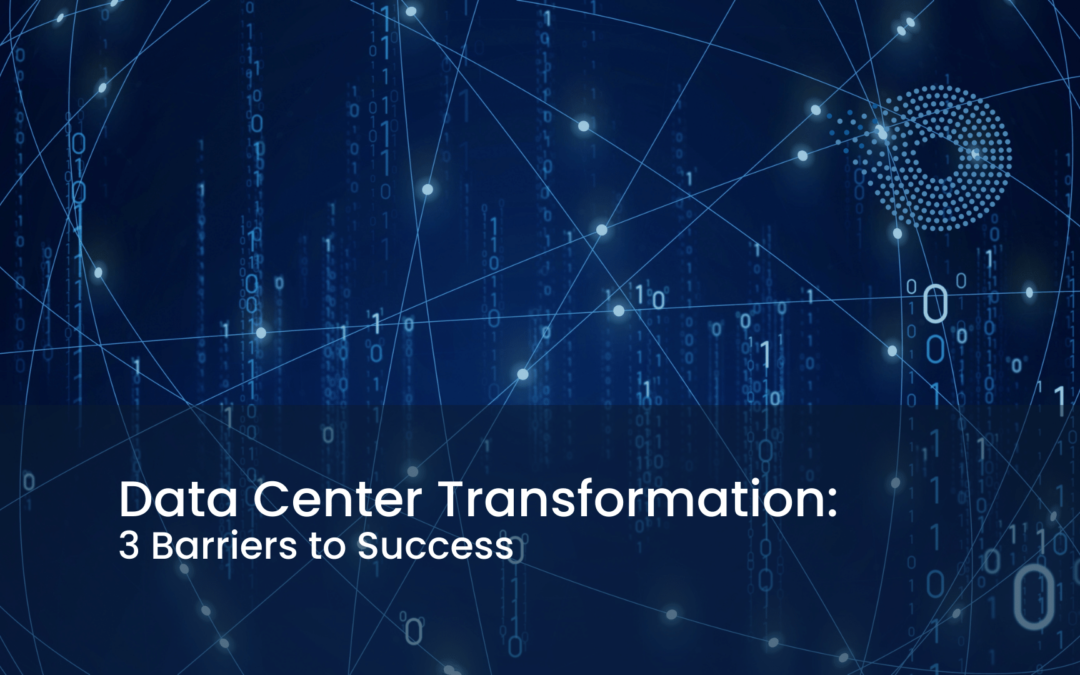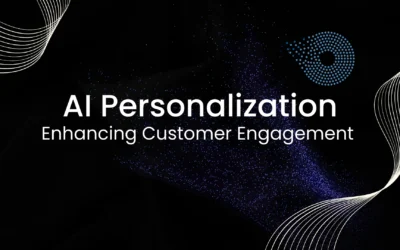Organizations continuously work to remain ahead of the competition in the digital age by utilizing the power of data.
Recent projections predict that the worldwide On-Premise data center transformation market will reach $15.92 billion by 2026, expanding at a CAGR of 13.5% between 2021 and 2026.
It shows how companies are starting to see how important it is to update their infrastructure and streamline their processes for better performance, scalability, and agility.
Although data center change has many advantages, several obstacles may prevent success.
Businesses may successfully traverse these challenges and change their data centers to survive in the new digital age by avoiding haphazard cloud migration, ill timing, and unclear collaboration with cloud and edge infrastructures.
Haphazard Cloud Migration
The management of data and applications by enterprises has been transformed by cloud computing. Moving to the cloud without a defined plan or roadmap may present multiple challenges.
Haphazard cloud migration is the unplanned or improperly executed transfer of data and applications to the cloud, which frequently results in problems, including data loss, security flaws, and performance bottlenecks.
40% of companies reported data loss or downtime during their cloud migration process due to poor planning and execution, according to a poll by IDG performed in 2021.
It is essential to take an organized cloud migration approach to overcome this obstacle. Start by thoroughly examining your current infrastructure, apps, and data.
Determine which workloads are suited for the cloud and choose the best cloud deployment option based on your organization’s needs (public, private, or hybrid).
Create a thorough migration strategy that includes tactics for speed optimization, security measures, and data backup.
You may lower risks and guarantee an effortless transition to the cloud by following a well-defined cloud migration strategy.
Ill Timing
The success of any On-Premise data center transformation program depends greatly on timing. According to IDC, 50% of companies will need to catch up in their efforts to engage in digital transformation by 2024, resulting in a significant loss of market share.
Starting a transformation project at the wrong time involves failing to take into account external factors, including market trends, technological improvements, and organizational preparation.
Inefficiencies, cost overruns, and missed opportunities can result from failing to coordinate the transformation activities with the overall business strategy and industry trends.
It is crucial to perform a thorough examination of the present market landscape and the unique demands of your company to get beyond the obstacle of bad timing.
To keep current on the newest trends and cutting-edge technologies, interact with industry professionals and technology partners.
Create a transformation roadmap that accounts for the expected expansion of your company and upcoming technological improvements.
To make sure your plans are in line with the objectives of the company and the changing business environment, periodically review and revise them.
Clumsy Coordination with Cloud and Edge Infrastructures
Data centers are no longer restricted to a single physical location in the era of hybrid and multi-cloud systems.
According to a Flexera report, 94% of businesses struggle to manage a hybrid cloud environment due to problems with security, compliance, and performance.
Businesses are utilizing cloud and edge infrastructures to spread their workloads, reduce latency, and improve scalability.
However, poor coordination across these infrastructures can prevent the successful migration of data centers.
Establishing strong coordination mechanisms between your data center, cloud providers, and edge infrastructure is essential to getting beyond this barrier.
Adopting standardized protocols and interfaces will provide seamless integration and interoperability between various environments.
Use centralized management solutions to give you a uniform view of your complete infrastructure, allowing you to monitor, balance workloads, and allocate resources effectively. Here, you can get more information about data quality issues and their solutions.
Increase good communication and teamwork between your IT teams in charge of managing various facets of your system.
You may optimize the advantages of your On-Premise data center transition by encouraging a unified and well-coordinated ecosystem.
Importance Of Data Center Transformation In The Digital Age
Because data is essential in determining corporate goals, fostering innovation, and gaining a competitive edge, data center transformation is necessary.
Traditional data centers frequently need help to keep up with the needs of modern computing as companies generate and collect massive volumes of data.
Here, we look at the main justifications for why modernizing data centers is so crucial in modern digital transformation.
Accommodating Growing Data Demands
Data volume, diversity, and velocity are all increasing exponentially in the digital environment. Organizations gather information from a variety of sources, including social media, Internet of Things (IoT) devices, and client interactions.
Businesses can increase their infrastructure, storage, and processing capacities to meet these expanding data needs by transforming their data centers.
Organizations may successfully manage heavy workloads, analyze data in real time, and gain insightful information by utilizing scalable and flexible solutions.
Enabling Enhanced Performance and Scalability
Traditional data centers frequently have performance and scalability issues.
Organizations may now optimize their infrastructure for better performance and low-latency access to essential information thanks to On-Premise data center transformation.
Businesses may effectively manage peak workloads and flexibly assign computing power, storage, and network resources with the ability to scale resources up or down based on demand.
This scalability facilitates flexible corporate processes and supports seamless user experiences.
Facilitating Agility and Innovation
For businesses to succeed in the digital age, agility is essential. Companies can quickly scale out new services and apps due to data center transformation, which speeds up time to market.
Organizations can disconnect applications from the underlying hardware and increase the agility of application development, testing, and deployment by implementing technologies like virtualization and containerization.
Collaboration is encouraged, DevOps is made possible, and companies are given the freedom to develop and adjust to shifting market demands because of this flexibility.
Optimizing Costs and Efficiency
The transition of data centers presents potential clients for cost reduction and increased productivity. Traditional data centers frequently have essential maintenance, cooling, and power usage costs, as well as capital and operational costs.
Organizations can cut expenses and increase resource efficiency by implementing virtualization, cloud computing, and energy-efficient infrastructure.
Businesses are also able to adopt cloud-based services thanks to On-Premise data center transformation, which makes use of cost-effective business models and does away with the need for substantial upfront investments.
Ensuring Security and Compliance
Security is an important issue for enterprises due to the rise in cyber threats and data breaches.
Businesses may put strong security measures in place to safeguard sensitive data thanks to data center transformation.
To protect data and reduce risks, modern data centers use cutting-edge security protocols, encryption methods, and access controls.
Also, data center transformation makes it easier for companies to keep up with rules that are specific to their industry, guaranteeing they satisfy data protection and privacy standards.
Security is a significant concern for enterprises due to the rise in cyber threats and data breaches.
Businesses may put strong security measures in place to safeguard sensitive data due to data center transformation.
To protect data and reduce risks, modern data centers use cutting-edge security protocols, encryption methods, and access controls.
Enhancing Business Continuity
Unanticipated interruptions can have negative effects on businesses. To reduce the risks of downtime and data loss, data center transformation enables the adoption of resilient infrastructure and disaster recovery solutions.
Businesses can guarantee ongoing operations and prompt recovery in the event of disruptions or disasters by utilizing redundancy measures, backup systems, and geo-replication strategies.
Enabling Future-Proofing and Innovation
Organizations that modernize their data centers are better positioned to take advantage of new technologies and promote innovation.
Businesses may use data to acquire insightful insights, automate procedures, and provide individualized experiences through improvements in artificial intelligence (AI), the Internet of Things (IoT), and edge computing.
Organizations can future-proof their infrastructure and get ready for the adoption of disruptive technologies that will change the digital environment by adopting data center transformation.
How the Cloud is Changing Data Centers
Data centers’ structure, operations, and capabilities have undergone a substantial transition as a result of the introduction of cloud computing.
A scalable and adaptable architecture for data storage, processing, and access is provided by cloud computing, allowing businesses to use the cloud’s capabilities to modify their data centers in several ways.
- Scalability and Elasticity
- Data Backup and Disaster Recovery
- Advanced Analytics and Insights
- Security and Compliance
Organizations can maximize the use of existing data centers by adopting the cloud, making them more effective, adaptable, and responsive in the age of technology.
Conclusion
Organizations looking to succeed in modern times must change their data centers. However, several obstacles may prevent these endeavors from being successful.
Businesses may get beyond these obstacles and successfully modernize their data centers by avoiding haphazard cloud migration, bad scheduling, and imprecise collaboration with cloud and edge infrastructures.
The path to a successful data center transformation will be set by adopting a systematic approach, aligning with business objectives and market dynamics, and fostering seamless coordination.
This will allow organizations to realize the full potential of their data assets and gain a competitive advantage in the digital environment.
Recent Post
Top Benefits of Data Governance for Your Organization
[pac_divi_table_of_contents included_headings="on|on|on|off|off|off" minimum_number_of_headings="6" scroll_speed="8500ms" level_markers_1="decimal" level_markers_3="none" title_container_bg_color="#004274" admin_label="Table Of Contents Maker"...
Enhancing Customer Engagement with Data Management Platforms and Omni-Channel Strategies
[pac_divi_table_of_contents included_headings="on|on|on|off|off|off" minimum_number_of_headings="6" scroll_speed="8500ms" level_markers_1="decimal" level_markers_3="none" title_container_bg_color="#004274" admin_label="Table Of Contents Maker"...
AI Personalization Excellence: Enhancing Customer Engagement in 2024
[pac_divi_table_of_contents included_headings="off|on|on|off|off|off" scroll_speed="8500ms" level_markers_3="none" title_container_bg_color="#004274" _builder_version="4.22.2" _module_preset="default" vertical_offset_tablet="0" horizontal_offset_tablet="0"...





